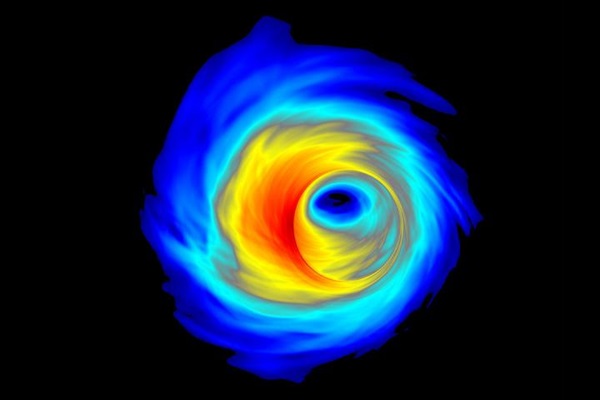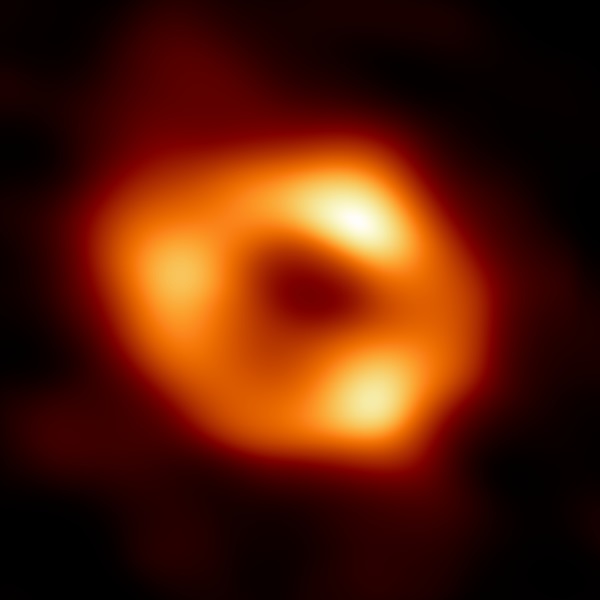Astronomers Examine 5,000 Star-Devouring Giants to Uncover the Mystery Behind the Twinkling of Black Holes
Although the interior of a black hole remains beyond our visual reach, we can observe the exceptionally luminous glowing disk that envelops it. This newfound insight could enhance our comprehension of the factors contributing to the apparent twinkling of these disks.
Black holes, a source of fascination even among astronomers, possess an extraordinary nature. Their immense mass bends the surrounding space so profoundly that not even light can escape.

Contrary to their renowned blackness, certain black holes exhibit remarkable visibility. The gas and stars consumed by these cosmic voids are drawn into a luminous disk before embarking on an irreversible journey into the black hole, with these disks often outshining entire galaxies.
Adding to the intrigue, these black holes display a peculiar twinkling phenomenon. The luminosity of the radiant disks undergoes fluctuations from day to day, leaving researchers uncertain about the underlying cause. In a unique approach, we leveraged NASA’s asteroid defense initiative, monitoring over 5,000 rapidly growing black holes in the sky for a five-year duration, aiming to unravel the mystery behind this twinkling. In our recent paper published in Nature Astronomy, we present our findings: a form of turbulence instigated by friction, intense gravitational forces, and magnetic fields.
Gigantic star-eaters
Our focus lies in the examination of supermassive black holes, specifically those positioned at the cores of galaxies, boasting masses equivalent to millions or even billions of Suns.
Within our own galaxy, the Milky Way, a colossal black hole with a mass approximating four million Suns resides at its center. Predominantly, the myriad stars—around 200 billion—including our Sun, orbit harmoniously around this central black hole.
Nevertheless, not all galaxies experience such tranquility. The gravitational interplay between pairs of galaxies can lead to a less serene scenario. During these interactions, numerous stars may be drawn perilously close to the central black hole of their respective galaxies. Unfortunately, the outcome for these stars is bleak—they are torn apart and consumed.
We strongly believe that such occurrences have transpired in galaxies housing black holes of a magnitude comparable to a billion Suns. This conviction stems from the challenge of envisioning alternative mechanisms for the substantial growth of these immense black holes. It is also plausible that such events unfolded in the Milky Way in the past.
Black holes exhibit an alternate, more gradual feeding process: absorbing clouds of gas expelled by aging stars, specifically those identified as red giants.
Feeding time
In our recent investigation, we delved into the feeding dynamics of the 5,000 swiftest-growing black holes in the cosmos.
In preceding research endeavors, we identified black holes exhibiting an insatiable appetite. Notably, we uncovered a black hole last year that consumes material equivalent to the mass of Earth every second. In 2018, we identified another that devours an entire Sun every 48 hours.
Despite these revelations, numerous inquiries persist regarding the actual feeding behavior of these cosmic entities. We comprehend that matter en route to the black hole forms a luminous “accretion disk,” capable of surpassing the radiance of entire galaxies. These actively feeding black holes are termed quasars.
The majority of these black holes are positioned at considerable distances—far beyond our observational capabilities to discern detailed features of the accretion disk. While we possess some imagery of accretion disks around nearby black holes, they predominantly depict the ingestion of cosmic gas rather than the consumption of stars.

Five years of flickering black holes
In our recent research, we utilized data from NASA’s ATLAS telescope in Hawaii, which conducts nightly scans of the entire sky (weather permitting) to monitor for asteroids approaching Earth from the cosmic expanse.
These comprehensive sky surveys inadvertently offer a nightly chronicle of the luminosity emanating from voracious black holes situated deep in the background. Our team compiled a five-year sequence for each of these black holes, illustrating day-to-day variations in brightness resulting from the dynamic and tumultuous luminous swirl of the accretion disk.
The twinkle observed in these black holes can provide valuable insights into the nature of accretion disks. In 1998, astrophysicists Steven Balbus and John Hawley proposed the theory of “magneto-rotational instabilities,” elucidating how magnetic fields can induce turbulence in these disks. According to this theory, the disks should exhibit regular patterns of sizzling and twinkle in random sequences corresponding to their orbital motion. Larger disks, with slower orbits, would display a leisurely twinkle, while smaller disks with tighter, faster orbits would twinkle more rapidly.
We sought to test whether the real-world behavior of these disks aligns with this seemingly straightforward concept, taking into account the intricate environment characterized by ultra-dense turbulence within intense gravitational and magnetic fields, where space itself is pushed to its limits.
Applying statistical methods, we gauged the fluctuation in light emitted from our sample of 5,000 disks over time. Although each exhibited a somewhat distinct pattern of flickering, a fascinating revelation emerged when we categorized them based on size, brightness, and color. Intriguingly, the orbital speed of each disk could be determined, and aligning our observation to the disk’s speed revealed a uniformity in all the flickering patterns.
This consistency aligns with the predictions of the “magneto-rotational instabilities” theory, offering reassurance that these complex luminous phenomena are, in essence, “simple.” Moreover, it introduces new avenues for exploration, suggesting that the remaining nuanced distinctions between accretion disks may stem from variations in our observational perspectives.
The next phase involves a closer examination of these subtle differences to ascertain whether they hold clues to decipher a black hole’s orientation. Ultimately, these advancements in measuring black holes could lead to even greater precision in future observations.
This article is republished from AstronomyCom under a Creative Commons license. Read the original article.
Do not forget to share your opinion with us to provide you with the best posts !



0 Comments